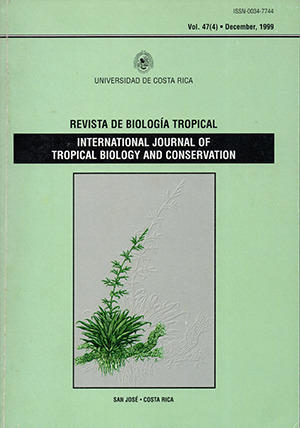Abstract
To complete the environmental quality assesment of Isla Mujeres-Cancún-Nizuc Natíonal Marine Park, the potentíal of rock cryptofauna as impact monitor was considered. A transect was defined along a vi sitor intensity gradient and three places ( 1.5-4 m deep, and 50, 250 and 500 m from the tourist platform); in each. !nte three rocks were collected. The variations in abundance and biomass along an environmental gradíent, and the relationship among diversity and dominance with the distance from the platform, density of rocks and depth were studied. Indices based on 10g lO (biomass + 1), and abundance-biomass curves were used to determine environmental quality. The Bray-Curtis index and the Jaccard coefficient were used to find affinities between stations. To evaluate the functionality of "taxonomic sufficiency" in coral bottom, the Berger-Parker indices for species and families were compared. Among the 1368 organisms found, the groups with higher specific richness were polychaetes (64 spp.), mollusks (46 spp.) and crustaceans (36 spp.). We identified a highly stressed en vironment near to the platform (Iow diversity, ABC curve). The trend is not associated with depth (although Ihere are increases) or rock density. Mollusk or crustacean biomass had not tendency; polychaete biomass is promissory but more evaluations are required. The cluster analysis separated rocks collected near the platform (stressed environment) from the rest. Comparison of the Berger-Parker index using species or families showed similar curves but work al family level ¡nereases differenees between roeks from the same place: there is a loss of usefuI information when higher taxa are used.
Comments

This work is licensed under a Creative Commons Attribution 4.0 International License.
Copyright (c) 1999 Revista de Biología Tropical
Downloads
Download data is not yet available.






